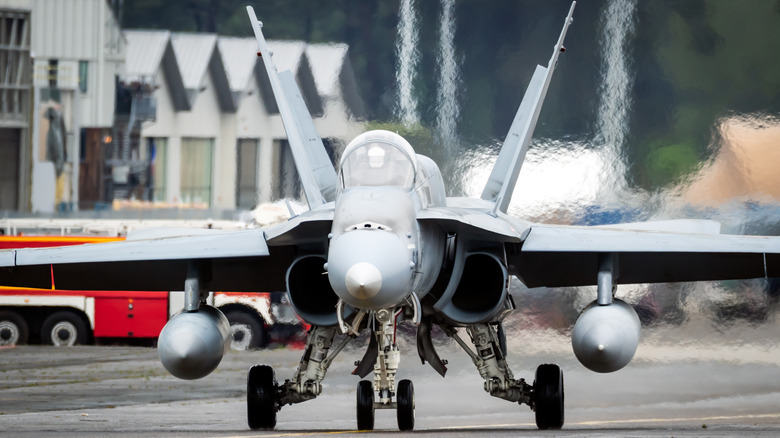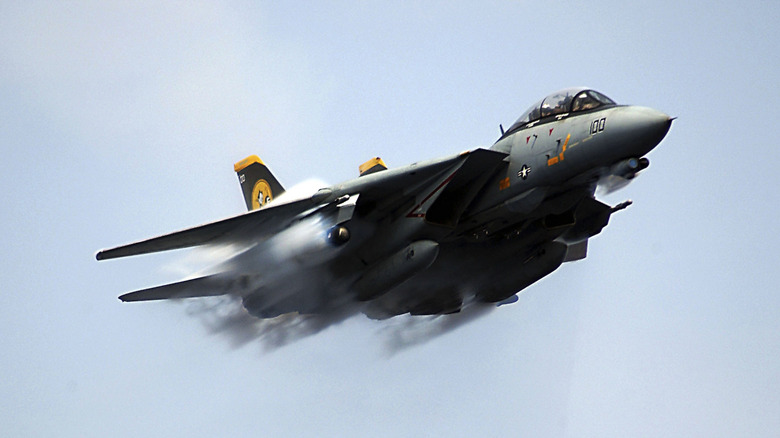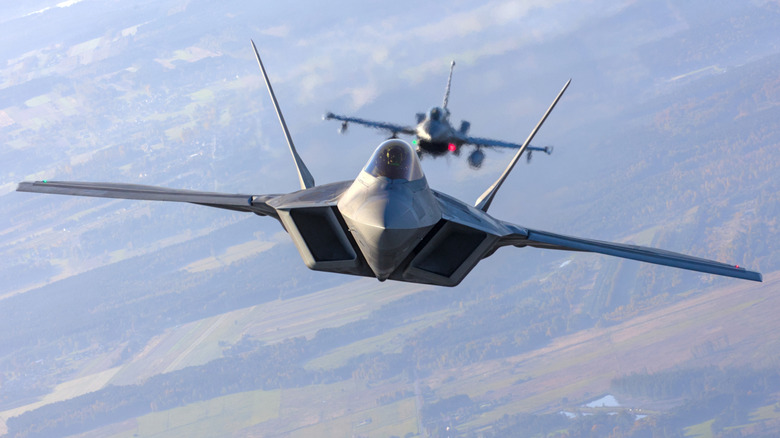Why Some Fighter Jets Have A Weird Gap Between The Engine And Fuselage
Military jets are technological marvels, with each model having its own unique function and capabilities. Some fighter jets in particular have a unique-looking design feature that positions the engines apart from its body. This weird gap between the engine and fuselage has several specific purposes that enable these specialized aircraft to operate with maximum efficiency. Jets like the F-4 Phantom II, F-15 Eagle, and F/A-18 Hornet all use what's called a splitter plate to create a notable gap.
When a jet is flying, there is a boundary of slow-moving turbulent air that sticks to the fuselage called the boundary layer air. If the intake ingests this slow, stagnant air along with the streamlined fast-moving air, it may destabilize the engines. By having the engines spaced out, it lets the disturbed air pass between the gap, leaving only the free-stream air to be fed through intakes, allowing the engines to function at maximum capacity. Fighter jets with engine intake gaps have been used on American, Russian, and European aircraft, and come with additional benefits such as improving lift and providing practical space for equipment.
Other benefits of having spaced-out jet engines
Fighter jets with spaced-out engines offer more than just improved engine performance. Some jets also have a wide flat surface on the fuselage between the gaps to increase its surface area, resulting in more lift. Great examples of this are the Grumman F-14 Tomcat and Sukhoi Su-27 Flanker. More operational reasons to place engines apart from the fuselage are to accommodate extra internal components and have larger payload capabilities; for instance, the F-14's AIM-54 Phoenix missiles are mounted in this space.
There's also more room for fuel, aviation tools, and heavy-duty landing gear bay. A manufacturer's goal is to produce jet fighters that can perform its mission and return home without getting shot down. To increase survivability, dual powerplants are used, which means if one engine is disabled, the other will remain operational. If one of the F-14 Tomcat's engines were to take a hit, its reinforced engine housing is designed to contain turbine blade damage, so it won't shred the fuselage, bringing down the entire plane.
From exposed gaps to a more stealthy design
During the 1940s, boundary layer air wasn't a problem because aircraft like the F-86 Sabre had a nose intake feeding a single engine. In the 1950s and 1960s, as planes started to reach transonic and supersonic speeds, engineers realized they had to deal with the boundary layer air problem. The splitter plate design was their answer, but as radar technology evolved, it forced another fighter jet design change. Having a splitter plate separating the engine and fuselage meant a higher chance of detection: The aim was to figure out how to minimize the gaps while maintaining aerodynamic and engine performance.
One huge development is the Diverterless Supersonic Intake (DSI) used on the F‑35 Lightning II. It works by redirecting the disturbed air away from the engine using a shapely bump on the intake instead of the gap, allowing for only smooth air to enter. Stealth fighters like the F-22 Raptor and Su‑57 use hidden ducts, bumps, and bleed systems to manage airflow, making intakes look flush with the plane's fuselage, ultimately reducing radar detection.


